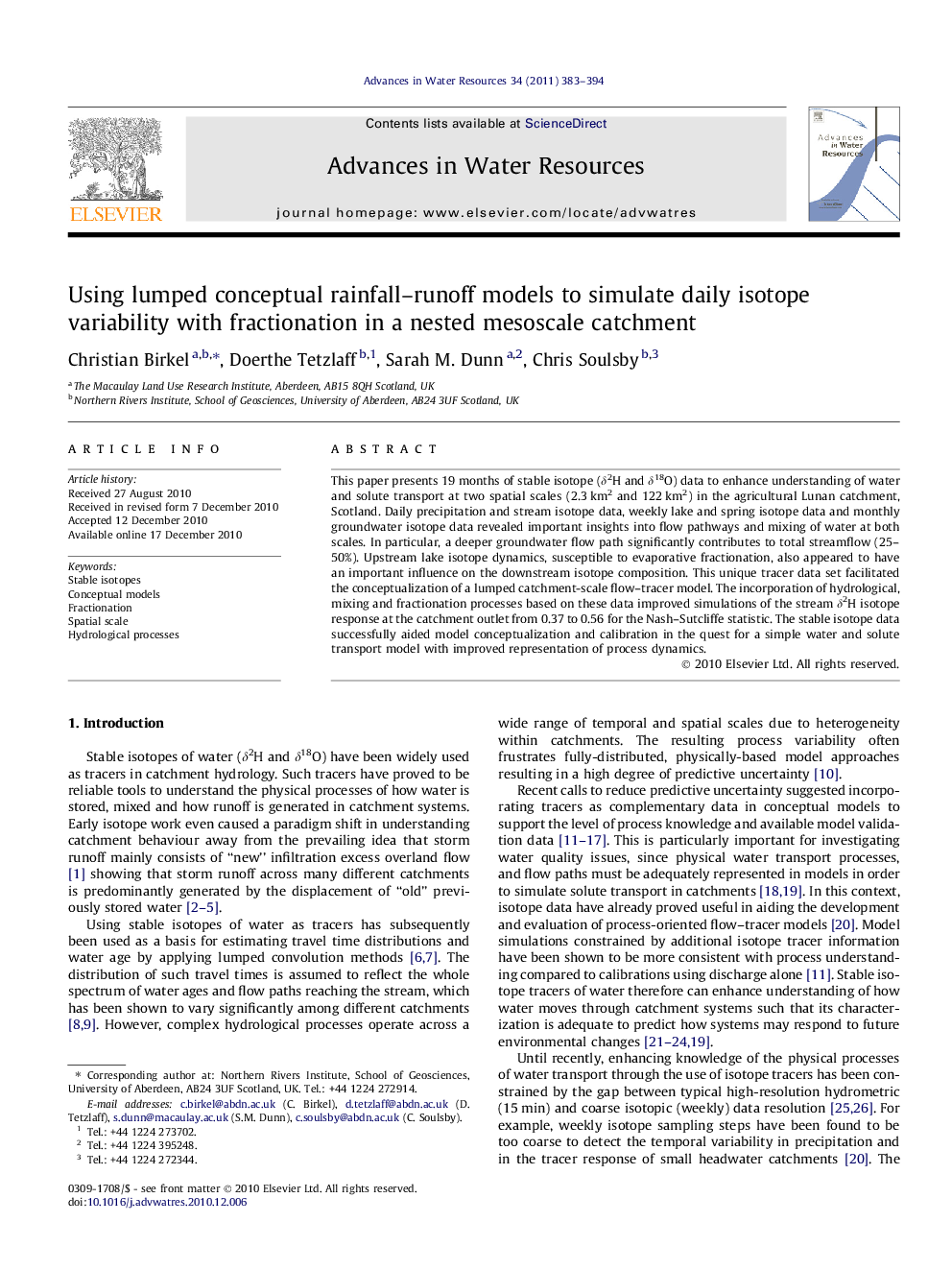| کد مقاله | کد نشریه | سال انتشار | مقاله انگلیسی | نسخه تمام متن |
|---|---|---|---|---|
| 4526130 | 1323816 | 2011 | 12 صفحه PDF | دانلود رایگان |

This paper presents 19 months of stable isotope (δ2H and δ18O) data to enhance understanding of water and solute transport at two spatial scales (2.3 km2 and 122 km2) in the agricultural Lunan catchment, Scotland. Daily precipitation and stream isotope data, weekly lake and spring isotope data and monthly groundwater isotope data revealed important insights into flow pathways and mixing of water at both scales. In particular, a deeper groundwater flow path significantly contributes to total streamflow (25–50%). Upstream lake isotope dynamics, susceptible to evaporative fractionation, also appeared to have an important influence on the downstream isotope composition. This unique tracer data set facilitated the conceptualization of a lumped catchment-scale flow–tracer model. The incorporation of hydrological, mixing and fractionation processes based on these data improved simulations of the stream δ2H isotope response at the catchment outlet from 0.37 to 0.56 for the Nash–Sutcliffe statistic. The stable isotope data successfully aided model conceptualization and calibration in the quest for a simple water and solute transport model with improved representation of process dynamics.
Research highlights
► High-resolution isotope data helped explain fluxes at two spatial scales.
► Incorporating additional data representing state variables helped constrain model simulations.
► Lake fractionation modified the downstream isotope composition.
Journal: Advances in Water Resources - Volume 34, Issue 3, March 2011, Pages 383–394